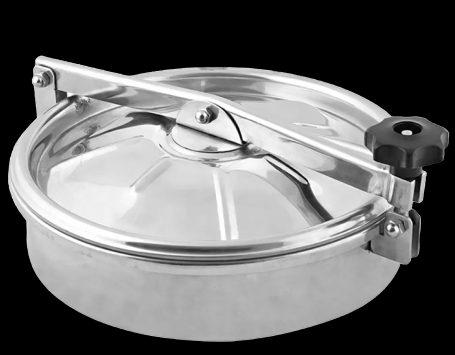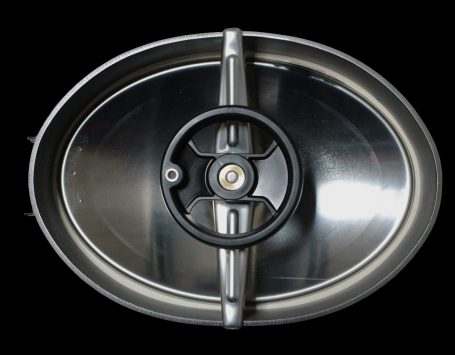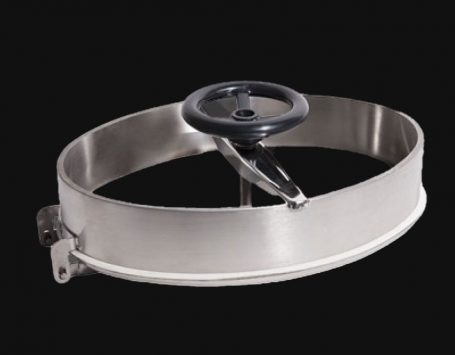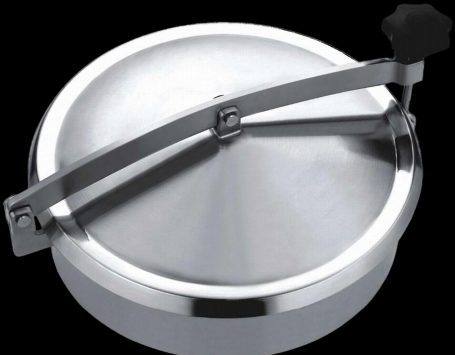Paslanmaz Menhol Kapak
- Home
- Paslanmaz Menhol Kapak
Paslanmaz Menhol Kapak Nedir?
Paslanmaz menhol kapak; tank, kazan, silo veya çeşitli endüstriyel sistemlerde iç bölgelere erişimi sağlayan, paslanmaz çelikten üretilen kapak sistemidir. Bu kapaklar hem iş güvenliği açısından hem de sistemin hijyenik yapısını korumak için büyük önem taşır.
Menhol Kapağı Neden Önemlidir?
Erişim Kolaylığı
Sistem içerisindeki ekipmanlara müdahale edilmesi gerektiğinde, menhol kapağı açılarak güvenli ve hızlı erişim sağlanır. Bu, bakım süreçlerini kolaylaştırır.
Güvenlik Sağlama
Menhol kapağı, sadece erişim sağlamakla kalmaz; aynı zamanda çalışanların kazara düşmesini önler. Bu da iş güvenliği standartlarını yükseltir.
Sızdırmazlık ve Koruma
Doğru bir menhol kapak seçimi, sızıntıları engeller ve sistemdeki sıvıların veya gazların dış ortama çıkmasını önler. Böylece çevresel ve sağlık riskleri ortadan kalkar.
Paslanmaz Malzemenin Avantajları
Korozyon Direnci
Paslanmaz çelik, suya, kimyasallara ve çeşitli asidik ortamlara karşı üstün dayanıklılık gösterir. Bu özelliği sayesinde uzun ömürlü kullanım sunar.
Uzun Ömürlü Kullanım
Galvanizli ya da boyalı metal kapaklara göre paslanmaz menhol kapakları çok daha dayanıklıdır. Yıllarca sorunsuz şekilde görevini yerine getirir.
Hijyenik Yapı
Özellikle gıda, ilaç ve içecek sektörlerinde tercih edilmesinin en büyük sebebi hijyenik yüzeyidir. Mikroorganizma barındırmaz ve kolay temizlenir.
Paslanmaz Menhol Kapak Nerelerde Kullanılır?
Gıda ve İçecek Sektörü
Süt tanklarından meyve suyu kazanlarına kadar birçok noktada hijyen standartlarını korumak için kullanılır.
Kimya ve İlaç Endüstrisi
Kimyasal dayanıklılık isteyen ortamlarda, paslanmaz menhol kapakları maksimum güvenlik sağlar.
Su Arıtma ve Atık Su Tesisleri
Sızdırmazlık ve dayanıklılık bu tür tesisler için olmazsa olmazdır. Paslanmaz menhol kapakları ideal çözümdür.
Enerji ve Petrokimya Tesisleri
Basınca dayanıklı modelleriyle enerji sistemlerinde güvenliğin anahtarıdır.
Paslanmaz Menhol Kapak Çeşitleri
Yuvarlak Menhol Kapakları
Genellikle silo ve tank üstü uygulamalarda tercih edilir. Basınca dayanıklı yapılarıyla öne çıkar.
Kare ve Dikdörtgen Menhol Kapakları
Tesis zeminleri veya tank yan yüzeyleri için ideal seçeneklerdir.
Basınçlı ve Basınçsız Modeller
Basınçlı sistemlerde kullanılan kapaklar, özel conta ve kilitleme mekanizmalarıyla donatılmıştır.
Asinoks Paslanmaz Menhol Kapakları
Özel Üretim İmkânları
Asinoks, ihtiyaca özel ölçü ve formlarda menhol kapak üretimi yapar. Projenize uygun en ideal çözüm size özel tasarlanır.
Kalite Belgeleri ve Sertifikalar
ISO belgeleri, CE sertifikası gibi uluslararası geçerliliğe sahip belgelerle ürün kalitesi tescillenmiştir.
Müşteri Odaklı Çözümler
İhtiyaç analizi, teknik destek ve hızlı teslimat ile her adımda profesyonel yaklaşım sunar.
Montaj ve Kullanım Kolaylığı
Hızlı Açılır-Kapanır Tasarımlar
Bakım süreçlerini hızlandıran aç-kapa mekanizmalar ile zaman tasarrufu sağlanır.
Kaynaklı ve Vidalı Modeller
Tank tipine göre esnek çözümler sunar. Hem sabit hem de taşınabilir sistemlerde kullanılabilir.
Paslanmaz Menhol Kapağında Dikkat Edilmesi Gerekenler
Malzeme Kalitesi
AISI 304, 316 gibi kalite sınıflarına dikkat edilmeli. Ortama uygun çelik kalitesi tercih edilmelidir.
Kullanım Alanına Uygunluk
Basınç, sıcaklık ve kimyasal etkileşimler göz önünde bulundurulmalıdır.
Sızdırmazlık Contası Seçimi
EPDM, silikon ya da viton gibi conta türleri kullanım yerine göre belirlenmelidir.
Paslanmaz Menhol Kapaklarında Fiyat Belirleyici Etkenler
Ölçü ve Kalınlık
Büyük çaplı ve kalın kapaklar, daha fazla hammadde gerektirdiğinden fiyatı artırır.
Kullanılan Çelik Kalitesi
316 kalite çelik, 304’e göre daha pahalıdır ancak daha yüksek dayanıklılık sunar.
Tasarım ve Üretim Özellikleri
Özel kilitleme sistemi, pencereli yapı veya contalı modeller fiyatı etkiler.
Asinoks ile Güvenli ve Kaliteli Seçimler
Uzman Kadro
Alanında tecrübeli mühendis ve üretim ekibiyle kaliteli ürünler sunar.
Türkiye Genelinde Teslimat
Hızlı üretim ve kargo süreçleriyle tüm Türkiye’ye ulaştırma hizmeti sağlar.
Satış Sonrası Destek
Montaj, bakım ve yedek parça desteği ile uzun vadeli iş ortaklığı sağlar.
Paslanmaz menhol kapakları, endüstriyel sistemlerde güvenliğin, hijyenin ve dayanıklılığın bir araya geldiği vazgeçilmez parçalardır. Asinoks olarak sunduğumuz yüksek kaliteli çözümler, hem sistemlerinizi korur hem de uzun yıllar sorunsuz hizmet almanızı sağlar. Kalite, güven ve müşteri memnuniyetini bir arada arıyorsanız, Asinoks ile doğru yerdesiniz!
Sıkça Sorulan Sorular (SSS)
Genellikle AISI 304 veya AISI 316 kalite paslanmaz çelik kullanılır.
Ölçüler, çelik kalitesi, model tipi ve özel üretim talepleri fiyatı belirler.
Hayır, çoğu model hızlı montaj imkânı sunar. Teknik destekle süreç kolaylaşır.
Gıda, ilaç, kimya, su arıtma ve enerji sektörlerinde yaygın olarak kullanılır.
Asinoks paslanmaz menhol kapakları, 2 yıl üretim ve malzeme garantilidir.





